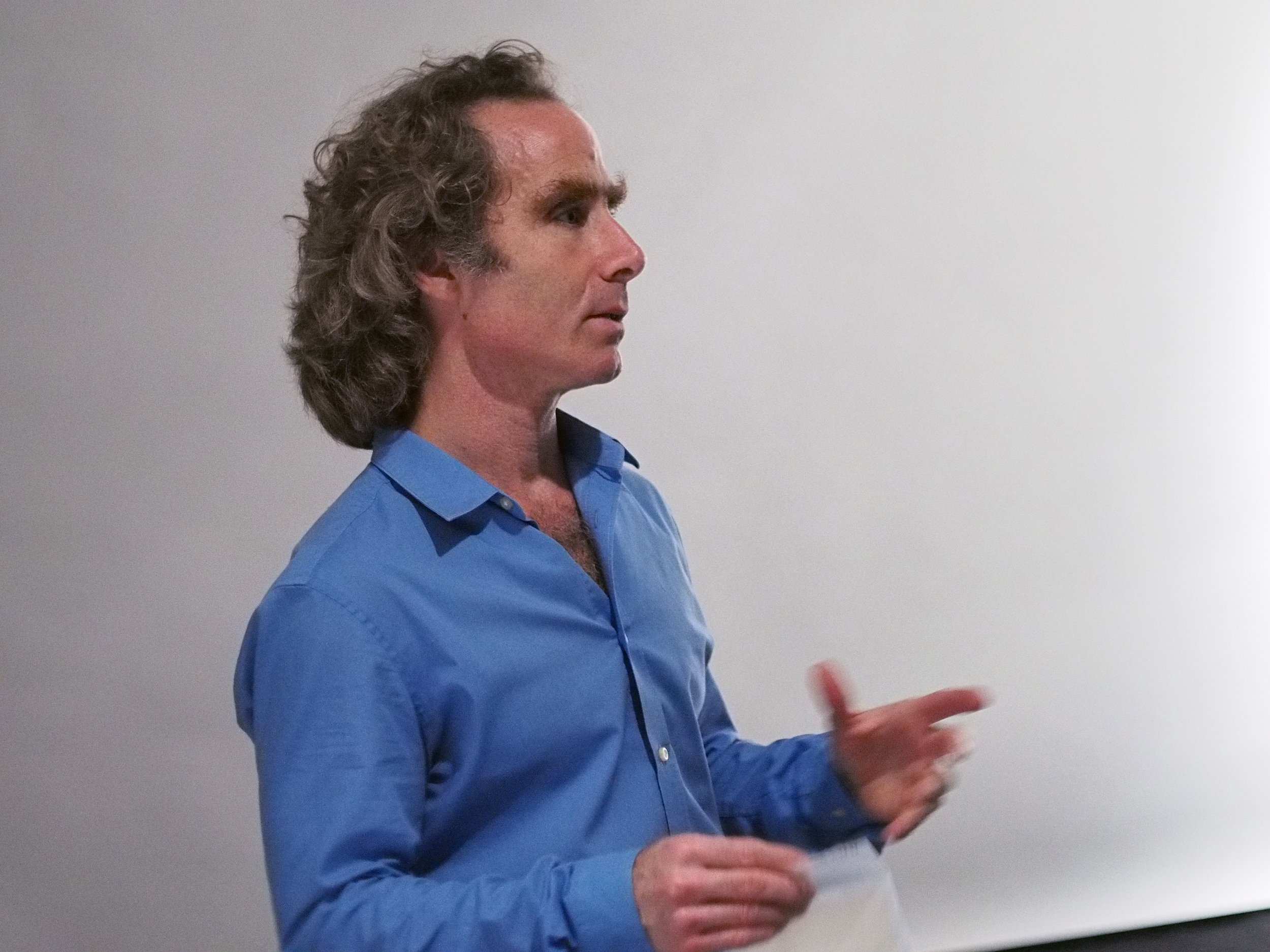
BIOGRAPHY
Seth Riskin’s art practice is in constant dialogue with his other research of light and vision. In 2021, Riskin earned a PhD at the Center for Advanced Integrative Arts (CAiiA) at Plymouth University in England (under the direction of media scholar/artist Roy Ascott); and in 1989, a Master’s degree at MIT’s Center for Advanced Visual Studies (CAVS) under the direction of German artist Otto Piene, a leading figure in technology-based art.
Riskin is the founding manager of the MIT Museum Studio and Compton Gallery, a program that relates artistic and scientific methods of research and education at MIT. He teaches interdisciplinary courses on light and vision. “Vision in Art and Neuroscience,” an annual course offered through the MIT Department of Brain and Cognitive Sciences, exploits the capacity of art to evidence structures and functions of the visual brain. Working with light, students pursue original art projects that reveal neuroscience principles to the eye. At the Rhode Island School of Design, he taught “The Architecture of Light” and “Light as an Art Medium.”
Riskin has held research positions at MIT, Carnegie Mellon University, and the Academy of Media Arts in Cologne, Germany. On a Fulbright scholarship to India 1992-3, he studied Hindu fire dancing in its philosophical context.
Riskin originated his Light Dance art form in 1987 at MIT where art-science connections flourished:
“Movement experience was profound for me, partly because, since a child, I was training in gymnastics with my identical twin brother—watching him and being watched by him. We went to college together, coached each other and competed together. This was a distinct advantage. In fact—true story—we tied for an NCAA title on our specialty, the parallel bars. To see a “clone” of myself performing was to experience the movement from within and without at once. This raised significant questions about the limits of the self-experience and the boundary between subjective and objective realities. I think that’s why I wanted to advance my art in this way, to transcend the limits of my body with light and share the experience of expressive movement with others.”
— Seth Riskin, interview by Sharon Lacey, October 2, 2017
Riskin wears his light apparatus while moving on the parallel bars. He originally came to MIT in 1986 to coach the women’s gymnastics team which inspired his subsequent experiments with light art based in movement of the body.
Notes on identical-twin experience and dualities in life and art
I locate the source of my art and thought in my experience as an identical twin. Seeing my twin has a quality different from that of seeing other people, or objects. The view of my twin is like seeing myself from the outside. Though I have learned to interpret the view of my brother as that of a separate individual, there remains an element of selfsameness, conflicting, as it coexists, with the experience of a physically distant person.
Having an identical twin through the course of my visual development I believe attuned me to the subjective element inherent in the view of what we, in social context, learn to interpret as another human being, or physical object. Twin experience primed me to perceive my own perception; it sensitized me to the trace of my own perceptual construction in what we experience as the “outer world.”
The feeling of being “here” and “there” at once that I know from my twin experience, I recognized at a young age in looking at light. The perception of light itself resists location in depth; it is as much a sensation as an object perceived; it locates both “here,” in me, and “out there,” at a distance. In the fabric of my visual world, my twin and light are simultaneously located within the scene and with me.
— Seth Riskin, notebook




